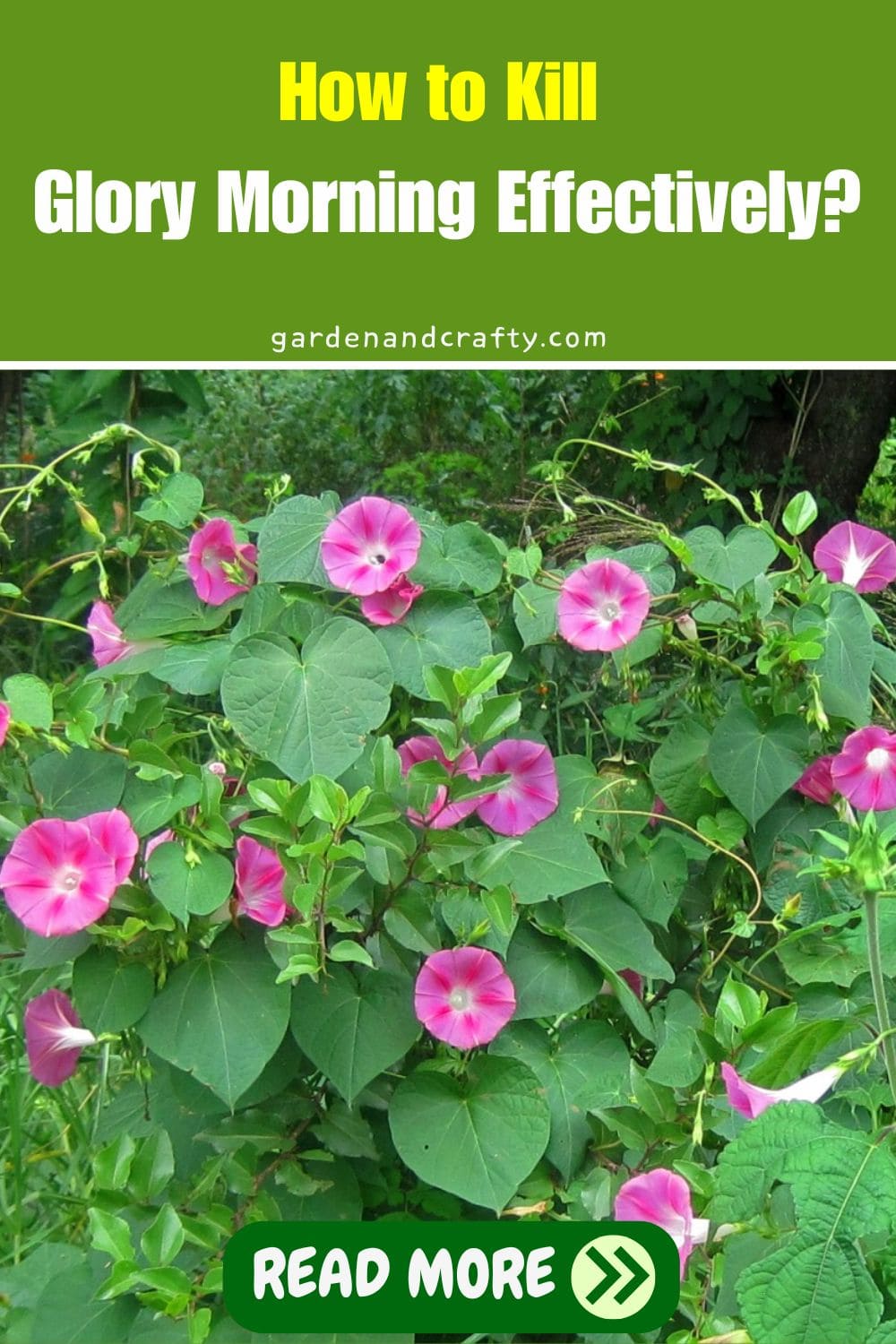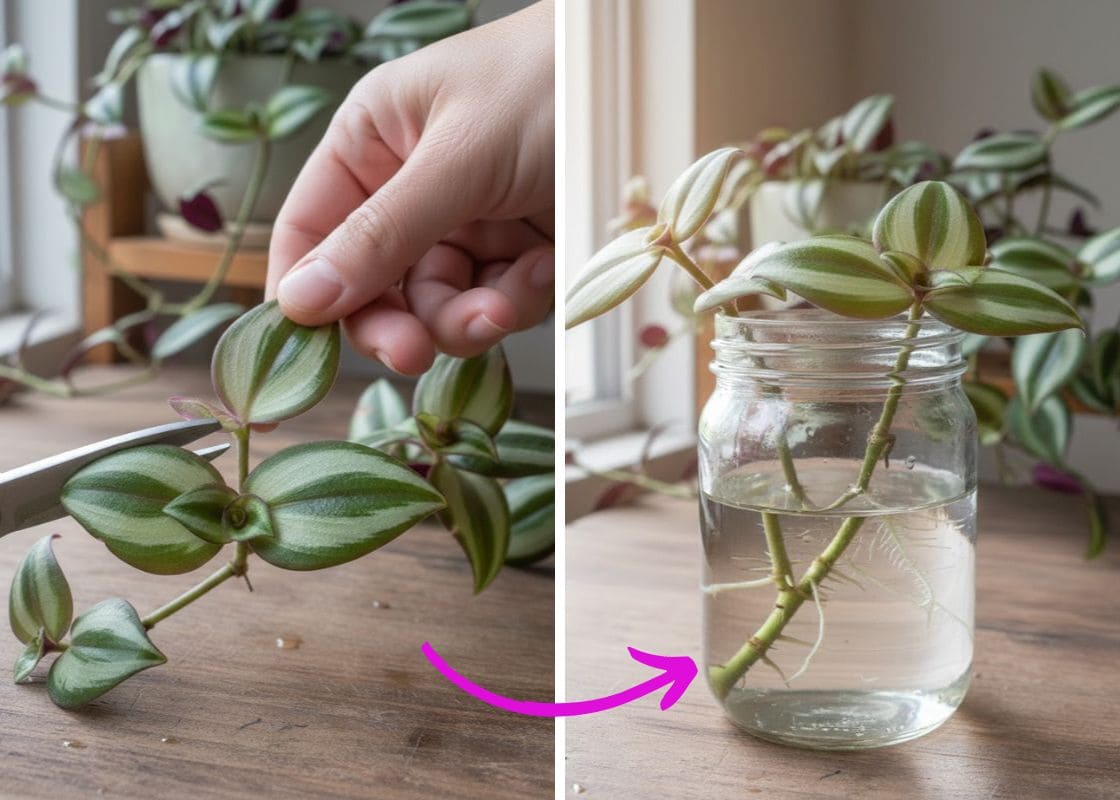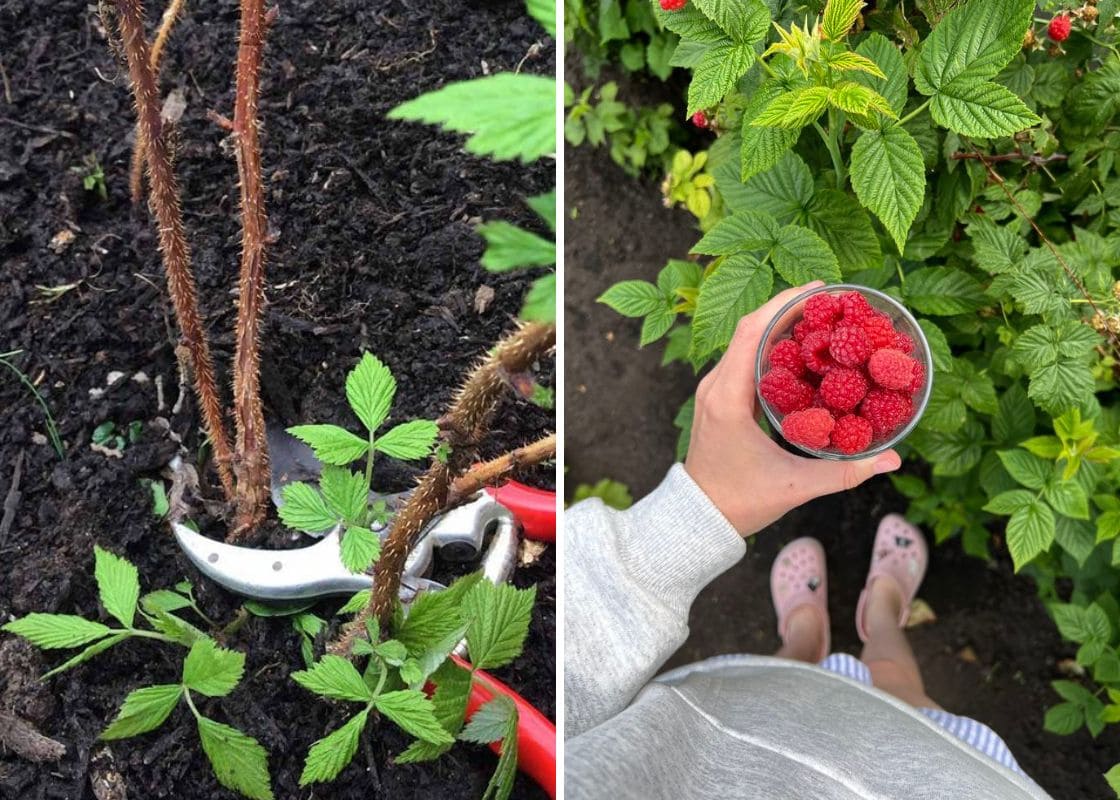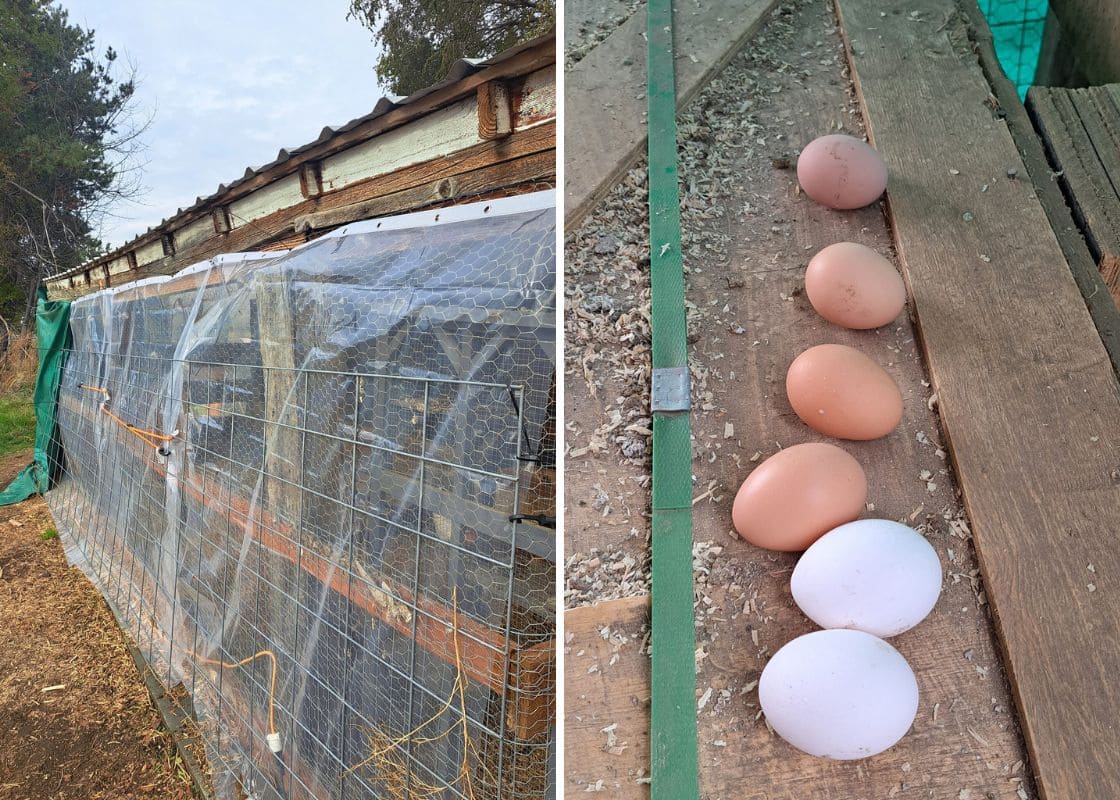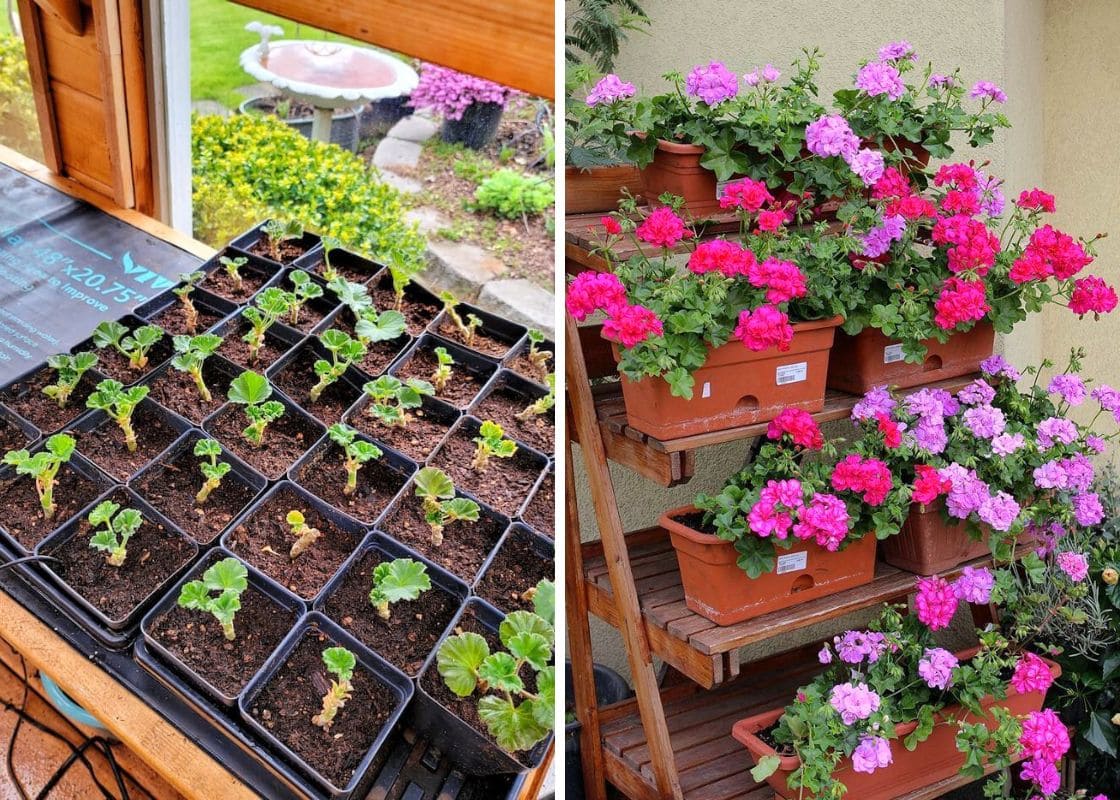With trumpet-shaped flowers, morning glory can be both a delight and a nuisance in the garden.
While vibrant blooms in blue, purple, pink, and white add charm to any space, its aggressive growth habit makes it outcompete other plants, causing serious issues.
But don’t despair! With the right knowledge and useful tips, you can reclaim your garden.
| Scientific name | Ipomoea spp. |
| Common name | Morning glory |
| Plant type | Annual, perennial |
| Flower color | Blue, purple, pink, white, red |
| Leaf shape | Heart-shaped or lobed |
| Growth habit | Climbing vine or bushy |
| Bloom time | Early morning |
| Preferred soil | Well-drained |
| Light requirement | Full sun |
| Native range | Tropical and subtropical regions |
Identifying Morning Glory
Morning glory is easily recognizable by its striking, trumpet-shaped flowers, which come in a variety of colors including blue, purple, pink, and white.
The flowers open in the early morning and often close by afternoon, giving the plant its name.
The heart-shaped leaves are lush and can range from smooth to slightly hairy, providing a dense canopy that quickly covers fences, and other plants.

Depending on the species and climate, morning glory can be annual or perennial that reach lengths of up to 10 feet or more in the growing season.
You’ll often find it thriving in full sun and well-drained soil, commonly appearing in gardens, along roadsides, and in disturbed soils.
Why We Need to Control Morning Glory
This vigorous vine competes fiercely for resources such as water, nutrients, and light.
Its dense foliage forms a canopy that shades out other plants, hindering their ability to photosynthesize effectively.
This competition can lead to weakened plants, reduced biodiversity, and ultimately lower crop yields.
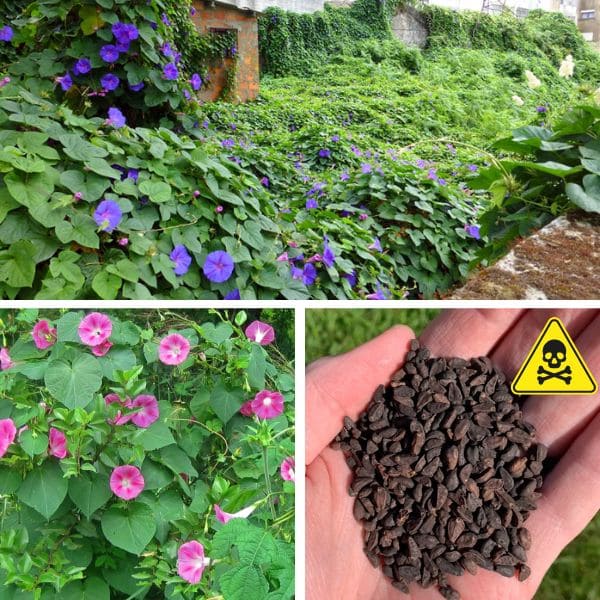
Moreover, seeds of some varieties, such as Ipomoea tricolor and Ipomoea purpurea, contain lysergic acid alkaloids (similar to LSD), causing harm if ingested by humans or animals.
These toxic compounds can cause symptoms like nausea, hallucinations, and even vomiting in children and pets.
How to Kill Morning Glory Effectively
#1. Using Glyphosate

Glyphosate is a non-selective herbicide, meaning it will kill most plants it contacts. The best way to apply it is with a targeted spray on a calm day to avoid drift onto other plants.
Dilute the Glyphosate according to the manufacturer’s instructions – typically, a 2% solution works well. Apply it directly to the leaves and ensure thorough coverage.
A single application might not be enough for established plants. You may need to reapply every two weeks until the morning glory shows signs of wilting and dying.
Remember to always wear protective gear, such as gloves and a mask, to avoid contact with the herbicide.
#2. Using Triclopyr
Triclopyr targets broadleaf plants and stubborn vines like morning glory while sparing grasses.
To apply Triclopyr effectively, mix it according to the manufacturer’s instructions – usually around a 1-2% solution.
Apply it directly to the leaves and stems of the morning glory, ensuring you cover all parts of the plant.
Reapplication may be necessary every few weeks until the plant is completely eradicated.

However, there are some drawbacks. Triclopyr can be harmful to aquatic environments, so avoid using it near water bodies.
Similar to Glyphosate, you need to wear protective clothing, gloves, and a mask to prevent skin contact and inhalation.
#3. Applying Vinegar Solution
You need to prepare the solution by mixing one gallon of white vinegar with a tablespoon of dish soap. Pour the mixture into a spray bottle for easy application.
When applying the vinegar solution, spray it directly onto the leaves on a sunny day. The acidity of the vinegar works best in direct sunlight and dehydrates.

However, be cautious as vinegar can also harm other plants, so target only the unwanted vines of morning glory.
Vinegar is a safer alternative to chemical herbicides and breaks down quickly in the environment. But you need to persist to achieve the effectiveness.
#4. Hand Pulling and Digging
Initially, I made the mistake of pulling the vines up from the roots causing the underground rhizomes to spread more aggressively, sometimes sending shoots as far as 20 feet away.

Instead, you need to loosen the soil around the base of the plant using a garden fork or shovel and then gently remove the entire root system.
These techniques are also effective for managing field bindweed, which shares similar invasive characteristics.
#5. Mulching
There are two main types of mulch you can use: organic and inorganic.
Organic mulches, like straw, wood chips, and shredded leaves, decompose over time, enriching the soil with nutrients.
Also, you can consider pure cedar mulch is excellent for natural insect control.
When applying mulch, I spread a layer at least 3 inches thick around my garden beds, ensuring it’s evenly distributed and extends beyond the plant bases.
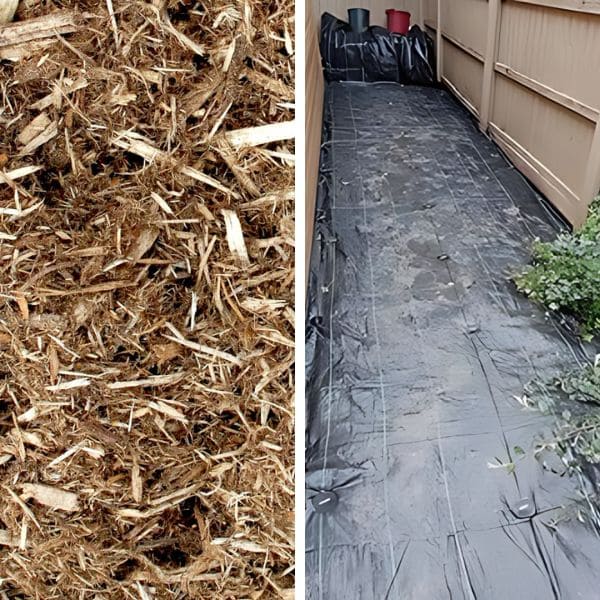
Inorganic mulches, such as landscape fabric or black plastic, provide a more robust barrier against light and growth.
This mulch layer blocks sunlight, which morning glory needs to thrive, and helps to maintain soil moisture, creating an inhospitable environment for the seeds to germinate.
Besides, you can try ECOgardener fabric, which is thick and permeable. It allows the new bushes we planted to soak up needed rain while preventing the plant from ever popping up in the beds.
#6. Soil Solarization
First, clear the area of any debris, weeds, or plant material. Then, water the soil deeply to a depth of at least 12 inches, as moist soil conducts heat better than dry soil.
Cover the area with a clear plastic sheet, ideally 1-2 mils thick. Secure the edges with rocks, soil, or stakes to ensure the plastic stays in place and traps heat effectively.
Leave the plastic in place for 4-6 weeks. During this time, the soil temperature under the plastic can reach up to 140°F to kill morning glory seeds.
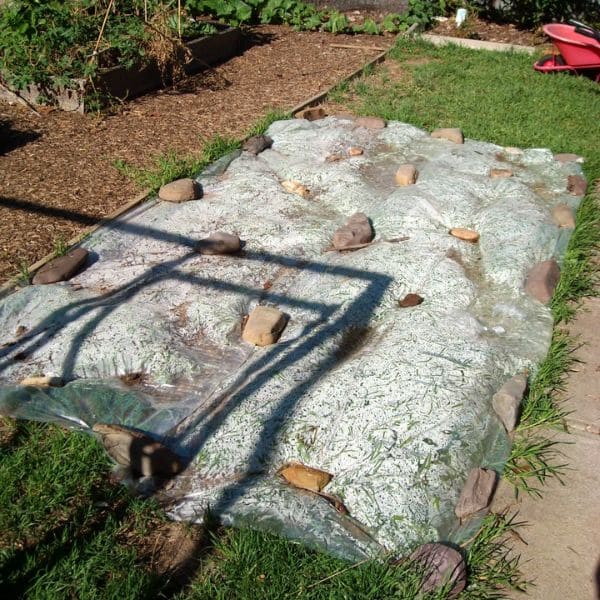
This method is chemical-free but it requires strong, consistent sunlight to be effective, which can be challenging in cooler or cloudy climates.
In USDA Hardiness Zones 1-6, where summers are shorter and less intense, soil solarization may not achieve the necessary temperatures to be effective.
On the other hand, it is particularly easy in USDA Hardiness Zones 7-11, where the prolonged, intense summer heat can sterilize the soil.
#7. Using Cover Crops
You can be successful at the first time with legumes to suppress weeds and enrich the soil with nitrogen through symbiotic relationship with nitrogen-fixing bacteria.
Grasses like rye and oats are also excellent choices, providing a thick ground cover that smothers weed seedlings and prevents erosion.
Brassicas like mustard and radish can also be effective, as their deep roots can break up soil and their allelopathic properties can inhibit weed growth.

You should implement cover crops in early spring or fall. Preparing the soil by tilling lightly and ensuring good seed-to-soil contact helps the cover crops establish quickly.
I usually broadcast the seeds evenly over the soil and lightly rake them in then keep the soil moist until the cover crops germinate.
These plants outcompete morning glory for light, water, and nutrients. Then, they shade the soil and prevent the sunlight that morning glory seeds need to grow.
#8. Pre-emergent Herbicides
Pre-emergent herbicides are an effective preventative measure including trifluralin, pendimethalin, or dithiopyr to disrupt the growth of seedling roots and shoots.
You should apply these methods in spring when soil temperatures reach approximately 55°F. In regions with mild winters, a second application in late summer or early fall can control winter-germinating weeds.
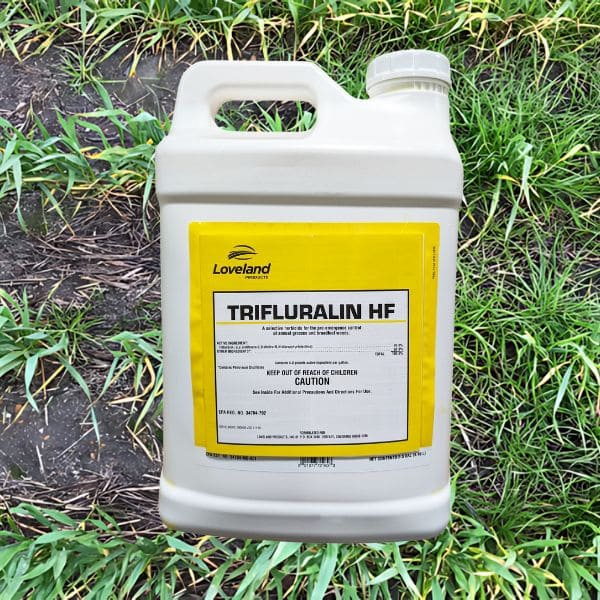
Also, follow the manufacturer’s guidelines. For example, trifluralin is often applied at a rate of 1.5 to 2.0 pounds of active ingredient per acre.
Additionally, you need to wear protective gear such as gloves, masks, and long sleeves to minimize exposure.
#9. Crop Rotation
Legumes, brassicas, and root vegetables are best for a rotation system. In the first year, you can plant peas and beans, which enrich the soil with nitrogen.
The following year, switch to brassicas like cabbage and broccoli, which benefit from the nitrogen left by the legumes.
Then, in the third year, you can grow root vegetables like carrots and beets, which help break up soil compaction.

This rotation enhances soil fertility and structure and changes crops that makes it harder for morning glory to adapt and thrive.
#10. Dense Planting
You should select fast-growing, ground-covering plants like clover, creeping thyme, and nasturtiums to quickly fill in gaps and form a dense mat over the soil.
Additionally, densely planting taller crops like corn or sunflowers can also provide shade and inhibit weed growth.
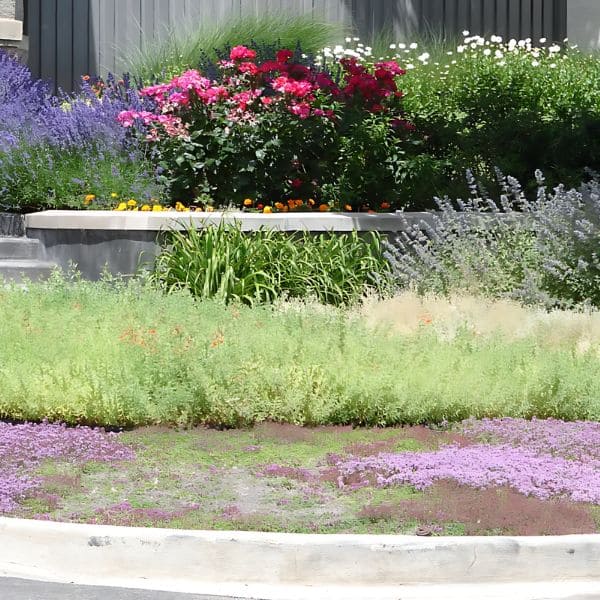
For effective implementation, start by enriching the soil with compost to support the growth of densely planted crops.
Space your plants closer together than usual, but ensure they still have enough room to grow healthily.
Note that regularly monitor the plants to make sure they’re not competing too much for resources.
